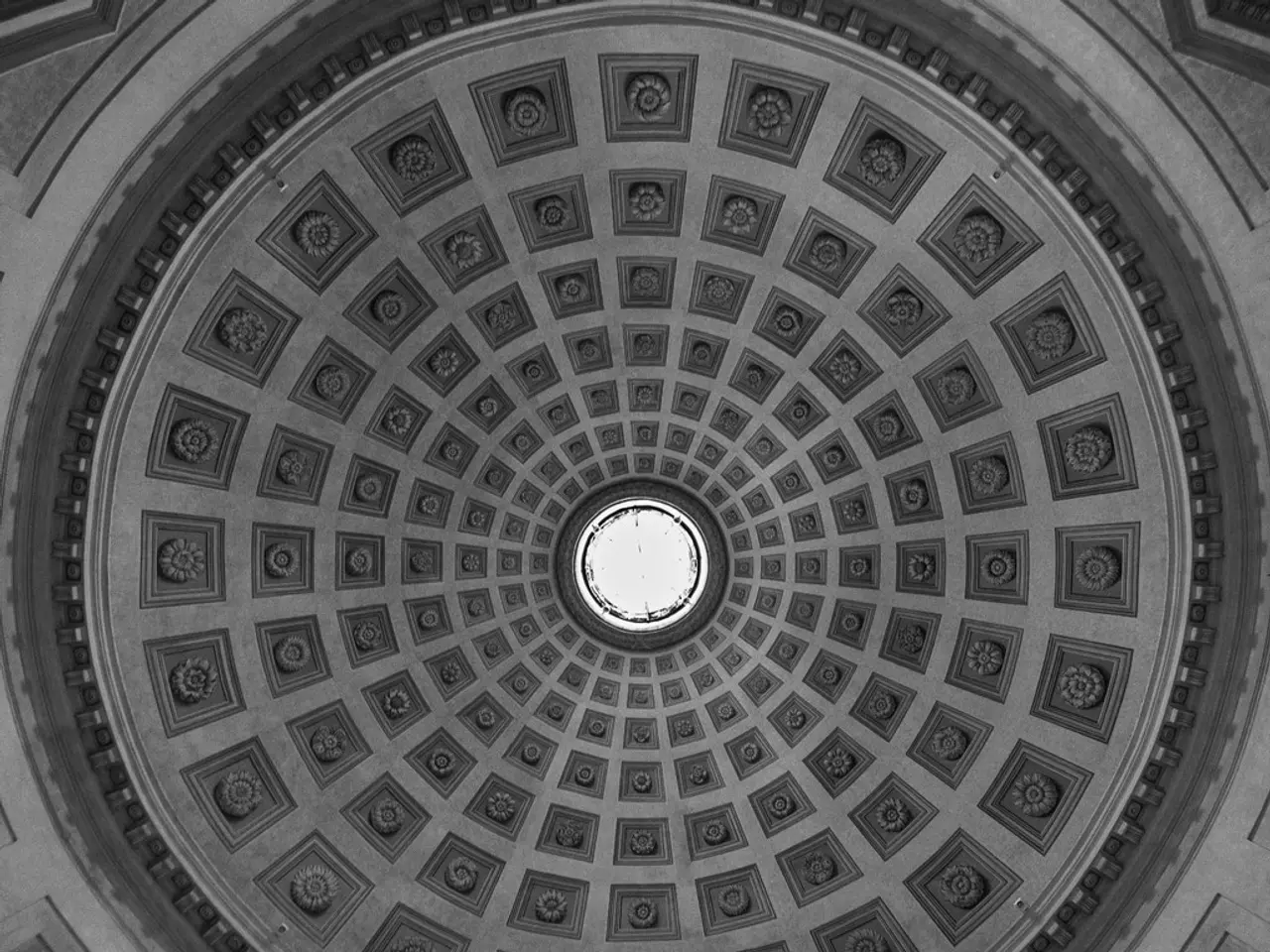Unraveling Roof Maintenance: Examining Repairs, Upgrades, and Complete Overhauls of Roofs
In the world of home maintenance, the decision between repairing or replacing a roof is a critical one. This article aims to provide homeowners with key factors to consider when making this important choice.
A full roof replacement allows for the removal of damaged components, the repair or replacement of the decking, and the installation of a new, cohesive roofing system. This process restores structural integrity and prevents further deterioration.
The age of the roof is a primary factor in this decision. Asphalt shingle roofs typically last between 20 and 30 years. If the roof is near or past this range, replacement is usually more cost-effective than repair, as repairs may only extend life short-term.
Minor leaks on a roof can be identified by small water stains on the ceiling, occasional drips during heavy rain, or damp spots along walls and corners. These issues may extend beyond the visible roofing materials and may affect insulation and interior walls.
Repeated patching of aging shingles may become costly and ineffective. Attempting to fix these issues in fragments without addressing the root causes may lead to recurring leaks and escalating repair costs.
The extent and type of damage also play a significant role. Localized damage on a relatively new or sound roof can often be repaired. However, extensive, widespread damage, sagging, rot, leaks, or multiple problem areas generally require replacement.
Financial factors are another crucial consideration. Repairing minor damage is generally more affordable in the short term, but ongoing repairs to an aging or severely damaged roof can accumulate expenses, sometimes exceeding the cost of a replacement over time. A full roof replacement involves a larger initial investment because it includes stripping off old roofing layers, fixing any structural damage, and installing new materials.
Other roofing materials, such as metal, tile, or slate, often endure longer but can still deteriorate over time.
Preventive maintenance is crucial for extending a roof's service life and minimizing the need for major repairs or replacements. Effective maintenance involves regular inspections, cleaning, timely repairs, and investing in quality materials to prolong roof life and protect homeowner investment.
Regular inspections identify issues early, including problems unnoticed by homeowners. Routine cleaning and upkeep, such as clearing gutters, removing debris, trimming overhanging branches, and cleaning moss or algae, prolong roof life and prevent damage. Prompt repairs address minor issues quickly to avoid costly progression or structural damage.
Investing in durable, weather-resistant materials and experienced contractors ensures a longer lifespan and warranty protection. Knowledge of warranty terms and actions that maintain coverage can save money on repairs or replacements.
Setting aside savings helps manage unforeseen roofing expenses without financial strain. Engaging roofing specialists for condition assessments, maintenance planning, and informed repair vs. replace decisions is also advisable.
In summary, homeowners should weigh roof age, damage extent, cost-effectiveness, and energy efficiency when deciding on repair versus replacement. Proactive, professional maintenance—including inspections, cleaning, and timely fixes—is essential to extend roof life and maximize the value of their investment.
A homeowner might find it beneficial to consider their 'lifestyle' and 'home-improvement' goals when evaluating the need for a full roof replacement. For instance, a homeowner planning to sell their property in the near future may opt for a roof replacement to increase the home's curb appeal and value.
When pondering the choice between repairing and replacing a roof, it's essential to remember that investing in preventive maintenance can help prevent costly repairs or replacements in the future. This 'home-and-garden' practice extends not just the roof's service life but also the overall 'lifestyle' and investment in the home itself.




